Email Inbox Management Guide: Essential Strategies for Sales Success
Email is one of the most popular forms of communication for both personal and professional use. It’s fast, easy, flexible, and affordable, and makes it incredibly easy for its 4.25+ billion users to stay in touch.
That being said, email’s ubiquity is a double-edged sword. While it’s certainly convenient to be able to communicate professionally via email, anytime and anywhere, managing a busy inbox can also quickly demand a remarkable amount of time.
Businesspeople receive an average of 120+ emails per day, each one requiring seconds to minutes of a recipient’s time to process/respond. This may not seem like a big deal, but minutes per day easily adds up to hours per week that’s dedicated solely to email inbox management.
That’s one reason it’s crucial that sales reps implement best practices around managing their inbox — to save time. It also helps reps improve their productivity, build better relationships, and optimize their email outreach.
In this article, we’ll go over our top strategies for email inbox management, including why it’s so important to optimize this seemingly mundane administrative task.
Here’s what we’ll cover:
- The Importance of Email Inbox Management for Sales Teams
- Top Strategies for Email Inbox Management
- Leveraging Yesware for Superior Email Inbox Management
- Advanced Email Management Tips for Sales Professionals
The Importance of Email Inbox Management for Sales Teams
There’s no question that email inbox management is super beneficial to a B2B sales strategy.  Email makes it fast and easy for sales reps to stay in touch with their teams and their buyers. Using email for sales outreach can add valuable data to your sales process.
Email makes it fast and easy for sales reps to stay in touch with their teams and their buyers. Using email for sales outreach can add valuable data to your sales process.
Still, there are also some cons to using email. In fact, one of its drawbacks is remarkably similar to one of its benefits: the instant ability to connect with anyone in your contact list.
While this makes it easy to get answers and solve problems quickly, it can also create a hyperfixation of checking email more than is necessary (or productive).
Each time a seller switches back and forth between email tasks and selling tasks (known generally as “context switching” in neuropsychology), it requires time and energy.  Plus, the inbox itself can also be a big energy drain– sifting through subject lines, extracting important information from messages, and responding to emails all require brain power that could otherwise be used for selling.
Plus, the inbox itself can also be a big energy drain– sifting through subject lines, extracting important information from messages, and responding to emails all require brain power that could otherwise be used for selling.
And if you’re skeptical, we should note that this isn’t just negligible time spillage — we’re talking hours per day spent on email inbox management.
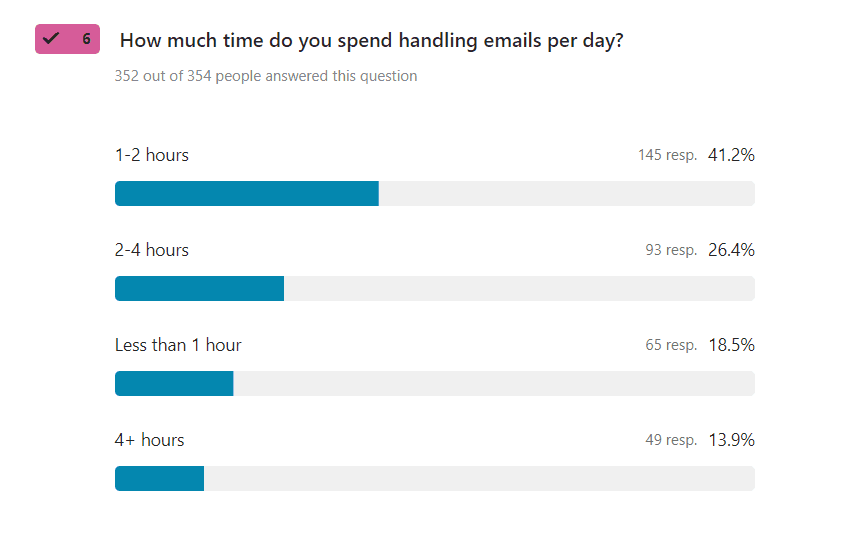
To get a sense of the bigger picture, some studies show that email inbox management can take up to 28% of the workweek to perform.
Effective email management improves sales productivity and performance by freeing up more time for reps to work on revenue-generating sales activities.
Top Strategies for Email Inbox Management
Here are 6 of our best strategies for effective email inbox management.
1. Prioritization Techniques
One of the keys to effective email management is having a system for prioritizing the hundreds of messages you’re likely to receive each day.
The way that you characterize and identify high-priority emails will be unique to your inbox needs. Many email service providers offer features like a “Flag” or a “Star” that can be easily clicked directly within the inbox to denote an important message.
Some email users prefer to prioritize only emails that require immediate attention, while others set rules and filters that dictate which messages are ultimately marked as important.
If you’re looking for a more structured prioritization framework, you might consider the Eisenhower Box (we dive into this a bit more in our Email Management Guide).
 This matrix categorizes emails based on the level of timeliness required, as well as the level of importance. It can make it easy for sales reps to make quick decisions about how to prioritize individual messages.
This matrix categorizes emails based on the level of timeliness required, as well as the level of importance. It can make it easy for sales reps to make quick decisions about how to prioritize individual messages.
Many sellers also swear by using a “Waiting Folder” that houses high-priority emails that have action pending and/or require feedback from someone else before it can be filed elsewhere or deleted.
2. Get Rid of the Trash
One of the fastest (and, truthfully, most satisfying) ways to deal with inbox overload is by using the delete button liberally.
Most people are guilty of saving “important” emails in their inbox for far too long. This is an easy way to clutter your inbox (and your brain), and also puts you at risk of missing actually important messages that get lost in the mix.
Take a deep breath, and get honest with yourself about each message in your inbox — do you really need it?
Most of the time, for emails over a week old, the answer is no. Delete it.
There are likely plenty of others that are more worthy of the trash than precious inbox space, so be as ruthless as you can. You can also always archive emails that you’re really not confident about deleting, but don’t need to see every day.
3. Unsubscribe
While deleting emails is quite effective, perhaps even more satisfying (and definitely more permanent) is unsubscribing from them.
Despite all of our best efforts, it’s rare to find an inbox these days that isn’t a smorgasbord of marketing newsletters and promotions.
Instead of deleting them over and over again week after week (hello, daily wasted minutes!), click “Unsubscribe” on the next edition that comes your way.
There are even some software tools that will help you identify which newsletters come to your inbox, and automatically unsubscribe from those that you no longer wish to receive.
4. Folder and Label Systems
Today’s email service providers offer a lot of flexibility to users when it comes to labeling messages (Gmail) or sorting them into folders (Outlook). Labeling/sorting helps email users group their emails according to specific individual preferences that make email inbox management easier.
Categorizing emails in this way makes it easier to find emails quickly. This is one of the most common email management complaints from sellers, with 73% reporting feeling frustrated by how much time they spend searching for emails in their inbox.
Although labels and folders sound somewhat basic, there are actually many ways to customize this tool to make it more customized and powerful for your needs.
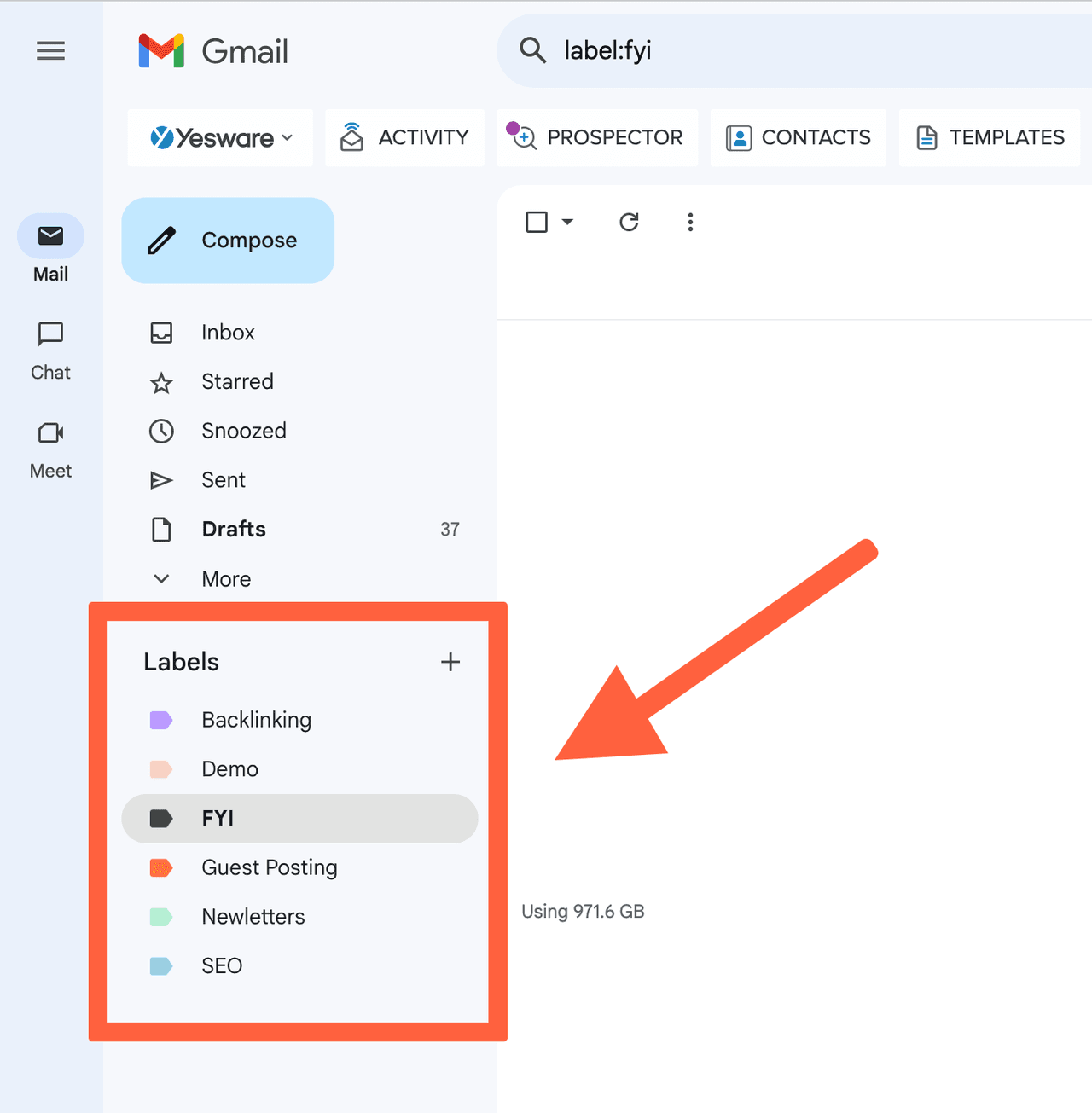
See a step-by-step guide on how to do so here: How to Create Folders in Gmail
Outlook, on the other hand, offers the ability to add subfolders within parent folders (indicated by the black triangular drop-down arrow in the image below).

You can also create rules and filters that direct your email service provider to automatically sort incoming messages and send them to their appropriate label/folder.
See a step-by-step guide here: How to Create Folders in Outlook
5. Time Management for Email Tasks
One of the best ways to master email inbox management is through effective time management.
To be clear, “email time management” is a completely different beast from “general time management,” and being good at the latter doesn’t necessarily indicate effectiveness at the former.
Time Blocks for Email
One of the easiest places to start for improved email productivity is by carving out only a few dedicated blocks of time (usually 2 – 4, half-hour periods) during which you will read and reply to your email messages and nothing else.
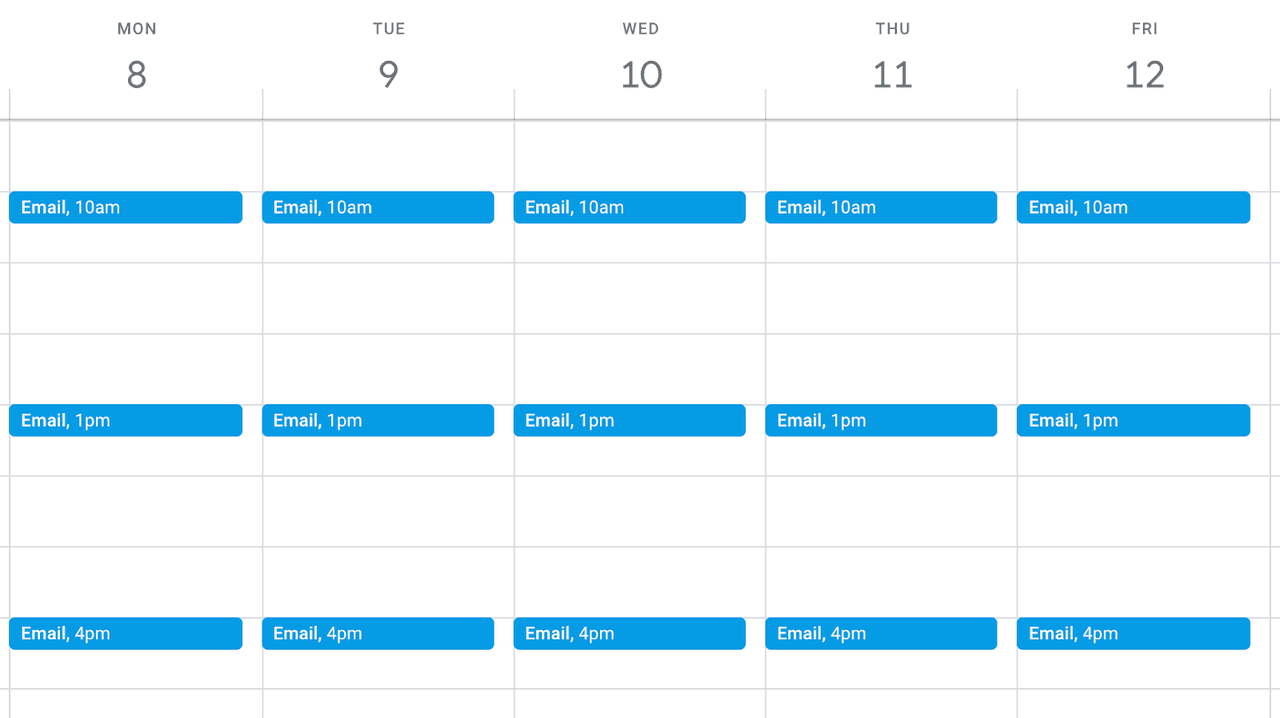
All of your focus should be on your inbox.
Most sales reps are amazed the first few times they try this — it’s pretty easy to knock out a dozen emails when you’re not interrupted by a dozen other tasks.
Conversely, though, you’ll need to avoid checking your email at any time outside of your designated email blocks. This also means turning off email notifications outside of those times.
This is generally the most challenging part of this strategy, given that the average employee checks their email 74x a day.
Needless to say, email time management can take some getting used to. Some sales reps feel more comfortable creating an auto-reply, notifying anyone who emails them when to expect a response.
Time Blocks for Sorting
It’s also important to set aside time for the non-reading/replying email inbox management tasks: sorting, filtering, deleting, unsubscribing, creating/editing rules, etc.
The amount of time you’ll need for this will depend on the shape of your inbox when you start, as well as how many emails come through your inbox on a daily basis. Aim for at least thirty minutes a week, but try not to exceed an hour.
Some sales reps also abide by the “1-Minute Rule,” which suggests that they respond immediately to any email that requires a minute or less to do so.
For those looking to really shave off every possible second, keyboard shortcuts can save a bit of time when you’re doing a lot of inbox work.

Remember: the goal is to save time. Keyboard shortcuts and other hacks are cool, but don’t spend more time learning them than the time they’ll save you in the long run.
6. Automating Repetitive Tasks
Gmail and Outlook (and many other ESPs) give users the ability to automate repetitive, time-sucking tasks through tools like email templates and other email automation features.
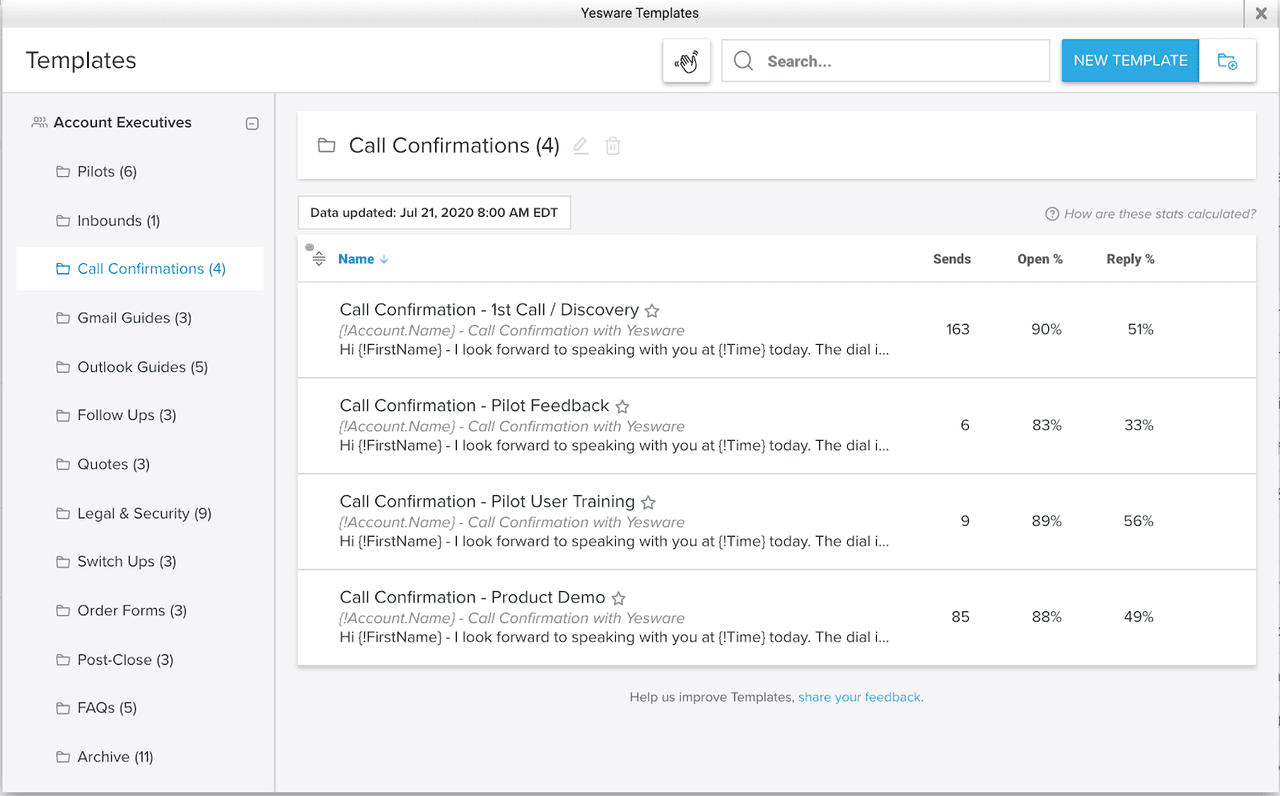
Most platforms make it easy to create winning templates for your most commonly sent messages.
Again, this is one of those tasks that saves probably just minutes per day — but multiple hours over the course of a month.
Looking to save time by leveraging email templates? Grab some of our top-performing templates in the ebook below:
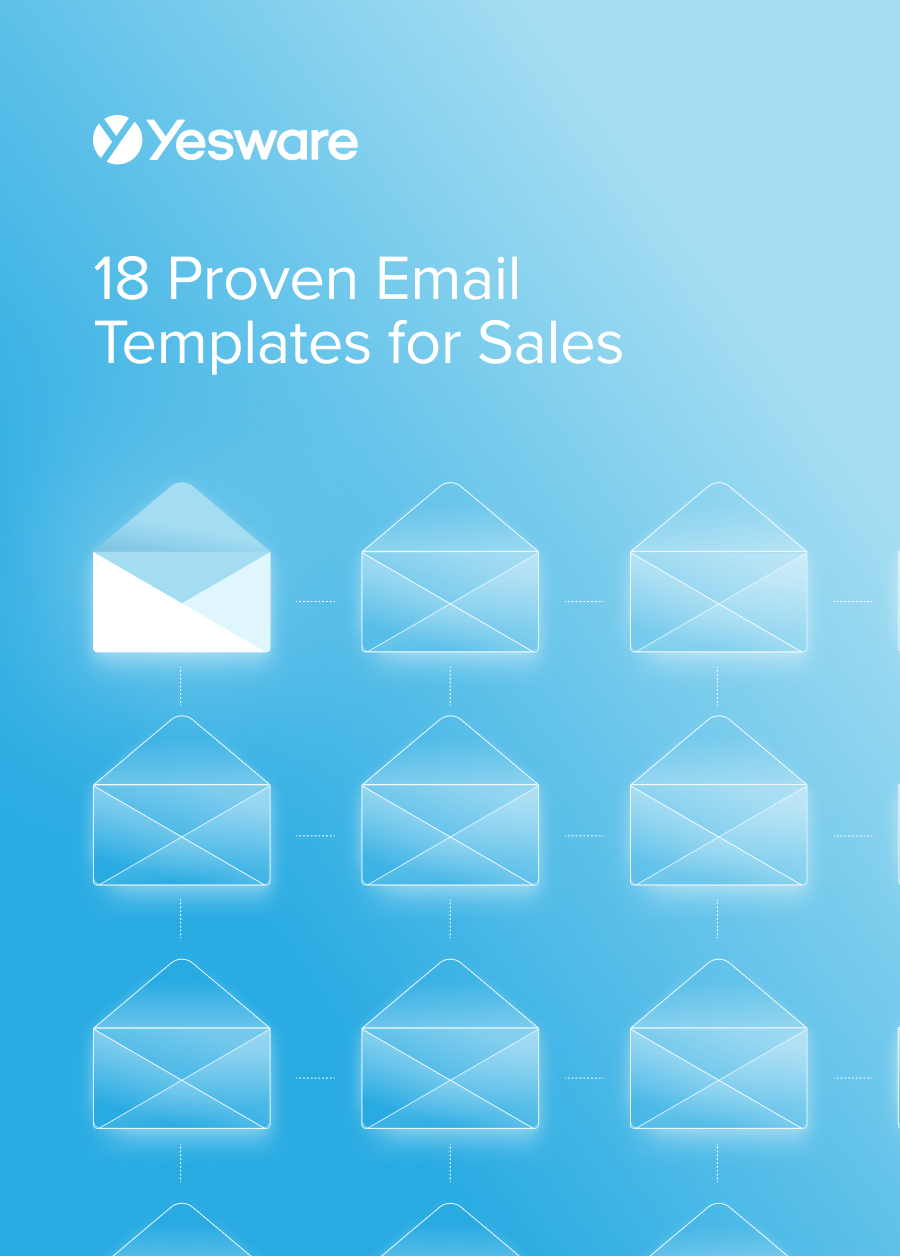 18 Proven Email Templates for SalesWinning email templates for cold outreach, follow-ups, and nurturing relationships – backed by data and real-world examples.
18 Proven Email Templates for SalesWinning email templates for cold outreach, follow-ups, and nurturing relationships – backed by data and real-world examples.
Leveraging Yesware for Superior Email Inbox Management
Yesware was designed specifically to streamline email for sales teams.
With all the tools you need for outstanding email inbox management (and none of the complexity or bulk of other tools), Yesware gives sales organizations a suite of automation features, including the power to track, manage, and analyze all of their emails and attachments.
Email Tracking Features
Yesware’s email tracking can help sales teams better understand how their recipients engage with their emails.
![]()
This feature is highly flexible, giving sales teams the ability to understand engagement on a variety of levels:
- Individual buyer engagement
- Overall campaign engagement
- Sales collateral/attachment engagement
What’s more, these insights come both in real-time and after longer-term data analysis.
This information helps sales reps prioritize their outreach and follow-up schedules.
Attachment Tracking
Yesware also helps sales reps specifically track any attachments that are sent within their email messages.
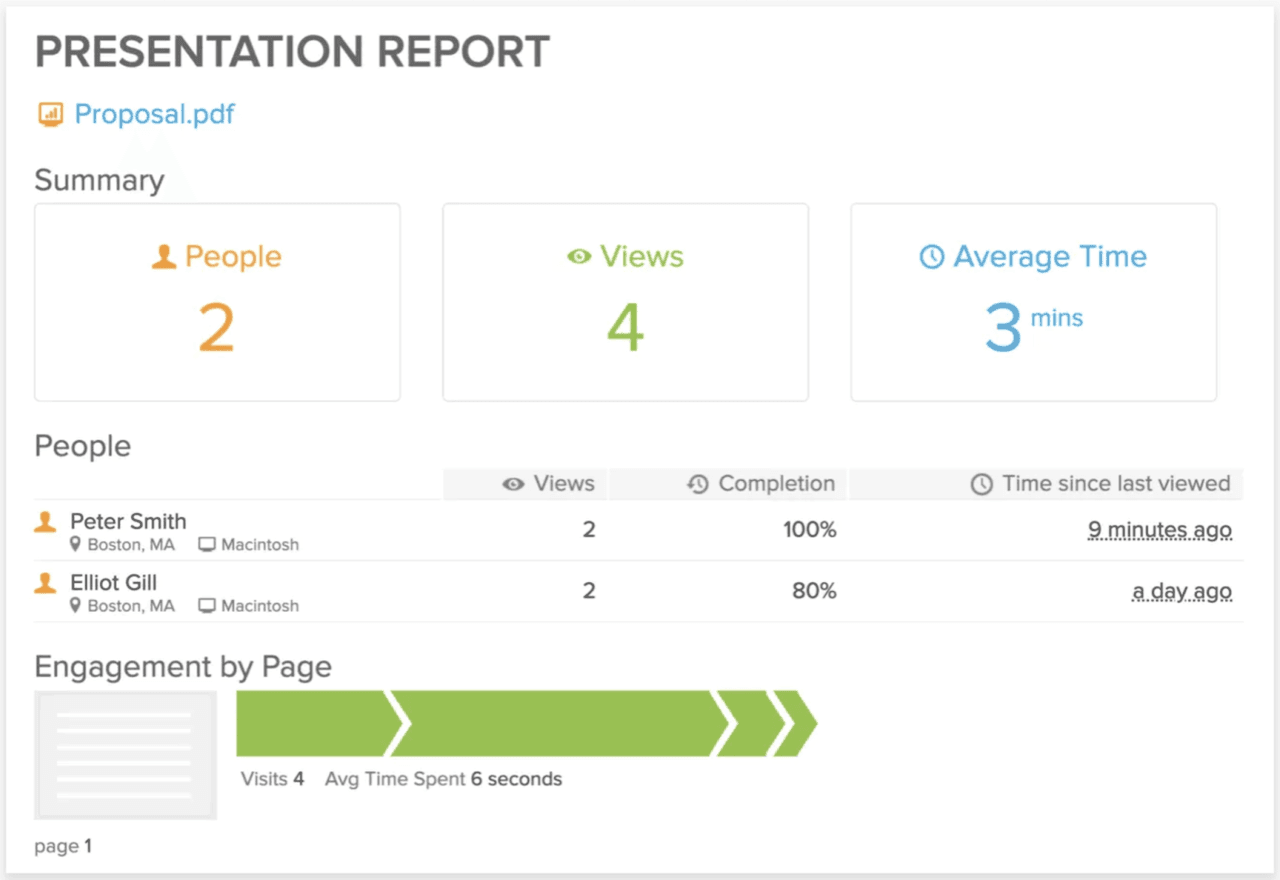
There’s more flexibility to this feature, too. Users can track engagement by attachment, by recipient, by number of clicks, and more.
This in-depth analysis helps sales reps identify the exact content that resonates most with buyers and is most likely to move them through the sales funnel.
Templates and Automation Tools
We’ve already talked about how Yesware’s email templates and automated follow-ups help save time for sales reps, but the ability to send emails quickly also matters to buyers.
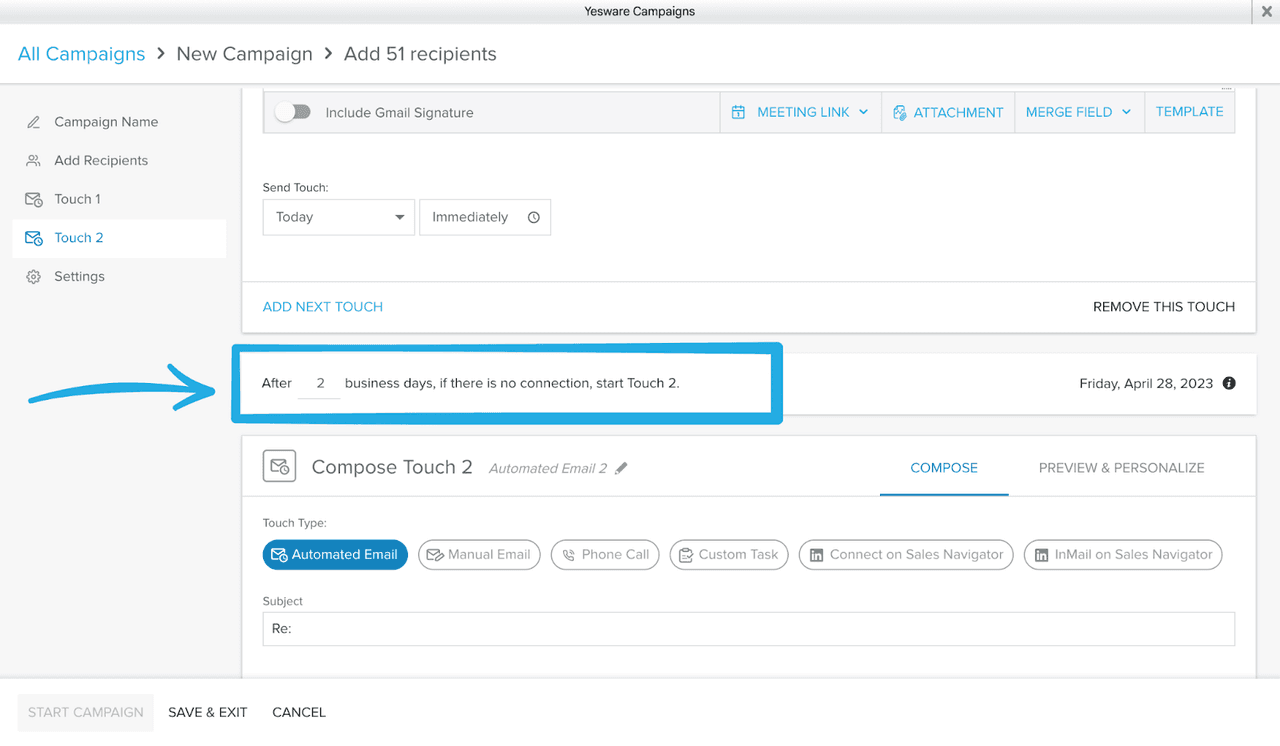
Studies show that the more quickly a sales rep responds to a lead, the more likely they are to qualify that sales opportunity.  Email templates and automation also help improve consistency and reliability in your sales messaging.
Email templates and automation also help improve consistency and reliability in your sales messaging.
Advanced Email Management Tips for Sales Professionals
For those sales reps who are already well-versed in email inbox management, try these more advanced techniques.
Dealing with Email Overload
Sometimes, no matter how hard you try, your inbox will get the better of you.
(Don’t worry — it happens to all of us!)
If you find yourself dealing with inbox overload and can’t get ahead, go back to your foundational time management strategies. You may need to schedule an extra email inbox management block to your schedule until you get back on top of things.
The goal doesn’t necessarily need to be the elusive (and stress-inducing) “Inbox Zero.” But keep in mind that your inbox is prime real estate, and should be reserved for only high-priority messages.
Plus, a cluttered inbox is a cluttered mind; freeing up digital space will likely also create some mental breathing room.
Integrating CRM with Email
In addition to email, your CRM system is the technological backbone of your sales process.  In an ideal world, these two tools should integrate with one another seamlessly. Your CRM should be able to log all of your email interactions, add new contacts from your inbox, provide insights as you draft emails, and more.
In an ideal world, these two tools should integrate with one another seamlessly. Your CRM should be able to log all of your email interactions, add new contacts from your inbox, provide insights as you draft emails, and more.
Yesware, for example, integrates seamlessly with Salesforce (and Gmail, Outlook, LinkedIn, and more).
When CRM and email live together, everything from lead tracking to sales forecasting becomes easier.
The Power of Analytics
Successful sales teams rely on sales reporting and analytics to drive their business.  Email analytics specifically tracks metrics like:
Email analytics specifically tracks metrics like:
- Delivery rate
- Bounce rate
- Open rate
- Reply rate
- Click-through rate (CTR)
- Click tracking
- Attachment opens
- Reading time
- Engagement data (sharing, forwarding, etc.)
- Unsubscribe rate
- Conversion rate
Sales teams that know how to leverage email analytics use data to improve their outreach targeting and personalization tactics.
Conclusion
Despite all the other tools available, email remains the most popular method for B2B communication. While there are many advantages to email, there are also drawbacks — including unmanageable inboxes that zap productivity and revenue.
Effective email inbox management practices will help sales reps stay on top of their communication and follow-ups in a way that generates data-driven insight and moves deals forward.
If you’re looking for an easy solution: Yesware’s suite of email productivity tools was designed to make email seamless for sales reps. All the tools you need live directly in your inbox to transform your email management approach.
Get sales tips and strategies delivered straight to your inbox.
Yesware will help you generate more sales right from your inbox. Try our Outlook add-on or Gmail Chrome extension for free, forever!
Related Articles
Jenny Keohane
Jenny Keohane
Melissa Williams
Sales, deal management, and communication tips for your inbox

